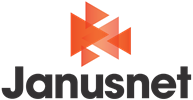Around the world, new privacy and data protection laws are driving the need for significant operational and technological responses. The challenge of protecting personal data in particular has great currency as all organisations consider how they are handling personal data.
How data classification enables data protection
Data protection involves all measures used to protect information from compromise, loss of integrity or unavailability. Historically businesses have focussed on protecting their most valuable data, which could reveal:
- Product development or marketing strategies
- Market-sensitive information, such as about mergers and acquisitions
- Intellectual property, or
- Financial information.
Now, especially with the advent of the General Data Protection Regulation (GDPR), there is increasing emphasis on protecting the personal data held by organisations – whether it is about customers, citizens, staff or other individuals. To adequately mitigate the risk of a data breach or non-compliance with privacy requirements, data protection needs to be factored in to decision-making at every level.
But an organization cannot determine how best to protect its data, until it first knows what type of data it has. Unstructured data – the information generated by staff in Word documents, spreadsheets, emails and the like – is the most difficult to protect, unless you have a systematic way of applying the appropriate information security controls.
This is where data classification comes in
Data classification is a method of categorising information, records or systems, according to the level of harm that an unauthorised disclosure could have on the organization. Each level of classification will have an appropriate set of information security controls, escalating in rigour commensurate with the escalating level of harm. If you are not familiar with data classification, watch this 4 minute video for an explanation of the concepts data of classification, and how it works together with other systems to prevent data breaches.
To find out more: -
- click here to read how to match your organization's obligations to manage personal information with a classification scheme, or
- the technology solutions that might help you Janusseal Documents and Janusseal for Outlook, or
- how the complimentary technologies of Data Governance; Data Loss Protection; Cryptographic and firewall & gateways protect your data.
To read our privacy white papers follow the links on the Resources tab at the top of this page.

